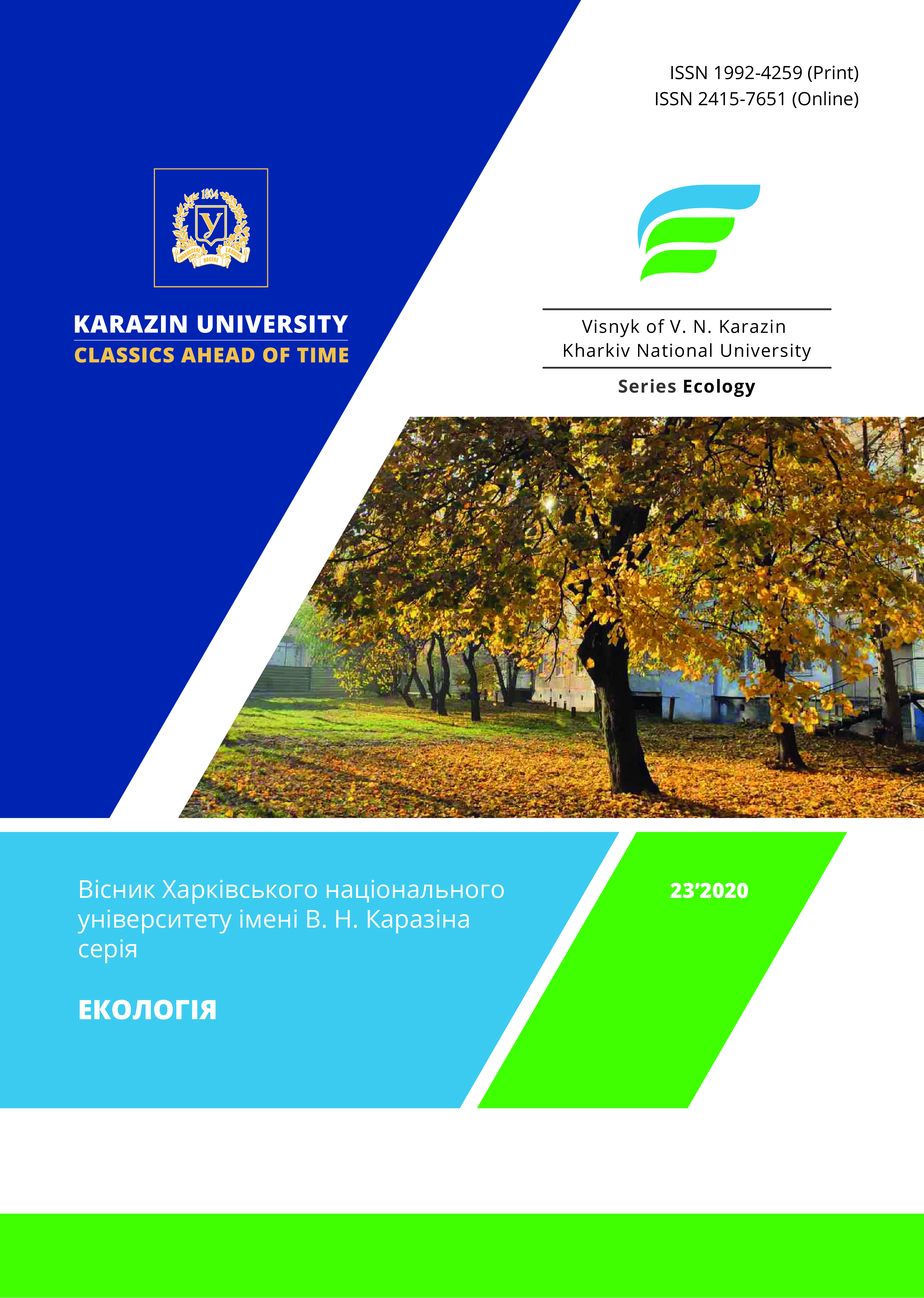Peculiarities of Pollution by Some Persistent Organic Pollutants of the Marine Environment of the Northwestern Part of the Black Sea
Abstract
Purpose. The study is aimed at estimation of marine pollution in the northwestern part of the Black Sea by some persistent organic pollutants (POPs), in particular polychlorinated biphenyls (PCBs) and hexachlorobenzene (HCB).
Methods. Peculiarities of marine pollution were determined on the basis of research conducted at the Ukrainian Scientific Center of Ecology of the Sea (UkrSCES). The content of PCBs and HCB was determined on a gas chromatograph Agilent 7890B with a capillary column and an electronic capture detector using the methods of the US Environmental Protection Agency (EPA-3545A, 3630C, 8081, 8082A, 8275A). The ecological state of the marine environment was determined using developed in UkrSCES the “Ecological standards of marine environment quality”, which allow us to assess the quality status of such components of the marine environment (sea water, bottom sediments and biota).
Results. The methodology of environmental standards has been adapted to assess the pollution of the marine environment of POPs. The ecological state of sea water and bottom sediments of the northwestern part of the Black Sea is determined according to the established values of Maximum Concentration Limit (MCL) and Ecological Standards (ES). The ecological state of marine biota was assessed by HCB pollution according to the established Ecological Standard. The European analogue of MCL (MAC-EQS) for industrial marine organisms was used to assess the ecological state of marine organisms for PCBs pollution (but it should be noted that the assessment was performed only for non-dioxin-like PCBs. Standard for the content of PCBs in marine organisms, in particular, – of industrial importance, must be implemented in Ukraine at the legislative level. For integral assessment of the ecological state of the marine environment and the specifics of POPs pollution in the northwestern part of the Black Sea, it is necessary to introduce a comprehensive monitoring system that would analyze marine pollution by all POPs required by the Stockholm Convention.
Conclusions. The ecological state of the sea water of the northwestern part of the Black Sea by POPs pollution in most cases corresponds to the category "very good". The state of marine biota in most cases corresponds to the quality classes "good" and "very good", but in Ukraine there are no clear standards that would regulate the content of PCBs in marine biota, in particular – for industrial important species of marine organisms. The ecological condition of bottom sediments is mainly classified as "satisfactory" and "poor", which under certain natural conditions can be a source of secondary pollution of sea water and biota. For integral assessment of the ecological state, it is necessary to take into account all POPs, which can significantly change the results of the assessment of the quality of the marine environment of the northwestern part of the Black Sea.
Downloads
References
Yanin, E.P. (1997). Polychlorinated biphenyls in the environment (ecological and hygienic aspects). M.: Publ. «Dialog-MНU». (In Russian).
Vijaya Bhaskar Reddy, A. & Moniruzzaman, M. (2019). Polychlorinated biphenyls (PCBs) in the environ-ment: Recent updates on sampling, pretreatment, cleanup technologies and their analysis. Chemical Engi-neering Journal, 358, 15 February, 118-120. https://doi.org/10.1016/j.cej.2018.09.205
Rovinsky, F.Ya., Afansiev, M.I., Vulykh, N.K. & Zgaruzina, A.N. (1987). Background content of organo-chlorine pesticides, polychlorinated biphenyls and polycyclic aromatic hydrocarbons in natural environments (according to world data). Monitoring of background pollution of natural environments, 4. Leningrad: Gidrometeoizdat, 51-81 (In Russian).
Gerlach, S.A. (1985). Pollution of the seas. Diagnosis and therapy. L.: Gidrometeoizdat. (In Russian).
Ivanova, E.A., Sokolova, N.R., Maryev, V.A. & Nikiforov, M.P. (2020). On the disposal of PCBs as part of the implementation of the Stockholm Convention on POPs in the Russian Federation. Bulletin of UNIDO in Russia. (15). Retrieved May, 17, 2020 from http://www.unido-russia.ru/archive/ (In Russian).
Denisenko, І.Yu. (2020). Persistent organic pollutants: problems and prospects of the future. Retrieved May, 17, 2020 from http://eztuir.ztu.edu.ua/jspui/bitstream/123456789/308/1/69.pdf (In Russian).
Mykhailenko, V.I., Safranov, T.A. & Shanina, T.P. (2018). An analysis of the situation of persistent organic pollutants in Ukraine (by the example of Odessa). Visnyk of V.N. Karazin Kharkiv National University Series «Еcоlogy», (18), 90-96. https://doi.org/10.26565/1992-4259-2018-18-09 (In Ukraine).
Mykhailenko, V.I., Shanina, T.P. & Safranov, T.A. (2018). Main sources of unintentional production of Persistent Organic Pollutants (the case of Odesa). Ukraine Hydrometeorology Journal, (21), 110-119. Re-trieved from http://uhmj.odeku.edu.ua/uk/osnovni-dzherela-nenavmisnogo-utvorennya-stijkih-organichnih-zabrudnyuyuchih-rechovin-na-prikladi-mista-odesa/ (In Ukraine).
Toxins in Foods. (2013). Retrieved from: http://goo.gl/d3QjCb/ (accessed 17 May 2020). (In Russian).
Commission Regulation (EU) No. 1259/2011 amending Regulation (EC) No. 1881/2006 as regards maximum levels for dioxins, dioxin-like PCBs and non dioxin-like PCBs in foodstuffs. (2011). Official Jour-nal of the European Union, 18-23. Retrieved from http://extwprlegs1.fao.org/docs/pdf/eur108087.pdf
Authors who publish with this journal agree to the following terms:
- Authors retain copyright and grant the journal right of first publication of this work under the terms of a license Creative Commons Attribution License 4.0 International (CC BY 4.0).
- Authors are able to enter into separate, additional contractual arrangements for the non-exclusive distribution of the journal's published version of the work (e.g., post it to an institutional repository or publish it in a book), with an acknowledgement of its initial publication in this journal.
- Authors are permitted and encouraged to post their work online (e.g., in institutional repositories or on their website) prior to and during the submission process, as it can lead to productive exchanges, as well as earlier and greater citation of published work.





